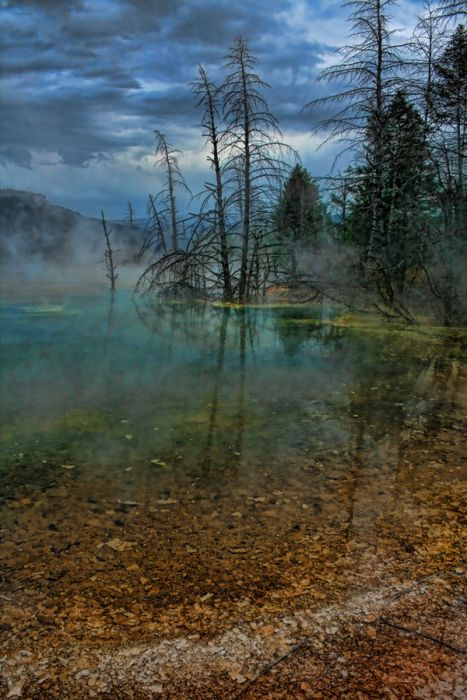Yellowstone National Park, Wyoming, Idaho, Montana, United States
|
In an effort to minimize the chances of out of control fires and threats to people and structures, park employees do more than just monitor the potential for fire. Controlled burns are prescribed fires which are deliberately started to remove dead timber under conditions which allow fire fighters an opportunity to carefully control where and how much wood is consumed. Natural fires are sometimes considered prescribed fires if they are left to burn. In Yellowstone, unlike some other parks, there have been very few fires deliberately started by employees as prescribed burns. However, over the last 30 years, over 300 natural fires have been allowed to burn naturally. In addition, fire fighters remove dead and down wood and other hazards from areas where they will be a potential fire threat to lives and property, reducing the chances of fire danger in these areas. Fire monitors also regulate fire through educational services to the public and have been known to temporarily ban campfires from campgrounds during periods of high fire danger. The common notion in early United States land management policies was that all forest fires were bad. Fire was seen as a purely destructive force and there was little understanding that it was an integral part of the ecosystem. Consequently, until the 1970s, when a better understanding of wildfire was developed, all fires were suppressed. This led to an increase in dead and dying forests, which would later provide the fuel load for fires that would be much harder, and in some cases, impossible to control. Fire Management Plans were implemented, detailing that natural fires should be allowed to burn if they posed no immediate threat to lives and property.
1988 started with a wet spring season although by summer, drought began moving in throughout the northern Rockies, creating the driest year on record to that point, courtesy of the droughts of 1988 and 1989. Grasses and plants which grew well in the early summer from the abundant spring moisture produced plenty of grass, which soon turned to dry tinder. The National Park Service began firefighting efforts to keep the fires under control, but the extreme drought made suppression difficult. Between July 15 and July 21, 1988, fires quickly spread from 8,500 acres (3,400 ha; 13.3 sq mi) throughout the entire Yellowstone region, which included areas outside the park, to 99,000 acres (40,000 ha; 155 sq mi) on the park land alone. By the end of the month, the fires were out of control. Large fires burned together, and on August 20, 1988, the single worst day of the fires, more than 150,000 acres (61,000 ha; 230 sq mi) were consumed. Seven large fires were responsible for 95% of the 793,000 acres (321,000 ha; 1,239 sq mi) that were burned over the next couple of months. A total of 25,000 firefighters and U.S. military forces participated in the suppression efforts, at a cost of 120 million dollars. By the time winter brought snow that helped extinguish the last flames, the fires had destroyed 67 structures and caused several million dollars in damage. Though no civilian lives were lost, two personnel associated with the firefighting efforts were killed.
Contrary to media reports and speculation at the time, the fires killed very few park animals— surveys indicated that only about 345 elk (of an estimated 40,000–50,000), 36 deer, 12 moose, 6 black bears, and 9 bison had perished. Changes in fire management policies were implemented by land management agencies throughout the U.S., based on knowledge gained from the 1988 fires and the evaluation of scientists and experts from various fields. By 1992, Yellowstone had adopted a new fire management plan which observed stricter guidelines for the management of natural fires.
|
|















